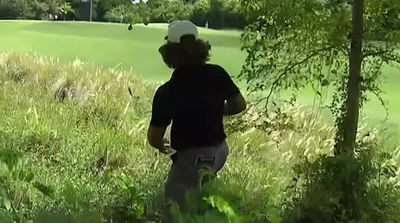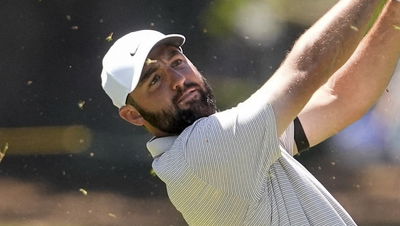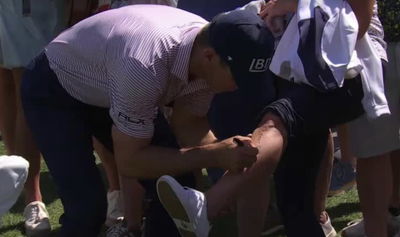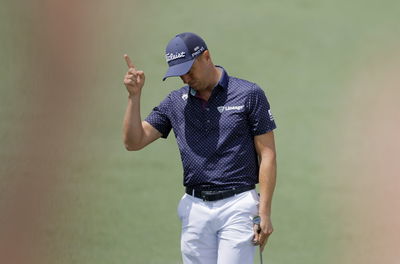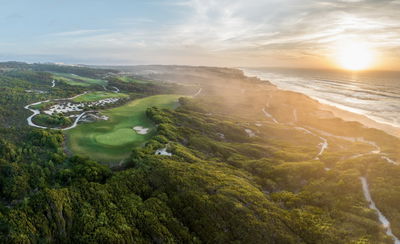Driving the new Titleist 909s
Revealed! First impressions of the latest big sticks from Titleist

Titleist’s new range of 909 drivers - the 460cc 909DComp and 909D2 and 440cc 909D3 - are designed in three head styles, confirming the company’s growing commitment to mid-handicappers as well as their traditional target market. I recently took them for a test drive. To view the latest Titleist Drivers check out the Titleist 913d3 and Titleist 910d3 reviews.
“It’s tough to come out with a product that’s demonstrably superior than its predecessor, because the Rules Of Golf won’t allow us to go beyond the various set limits,” admitted Ken Graham, Titleist’s director of sales and marketing, as he introduced the long-awaited 909 series.IN THESE DAYS of outrageous driver claims it was refreshing that the launch of new Titleist drivers opened with a long-overdue reality check.
“But there’s still a long way to go in terms of club-fitting. Many golfers are still not playing the right golf clubs for their game.”
It was reminder that for many golfers there’s indeed plenty of scope for extra distance and accuracy if only you could home-in on the right combination of head and shaft. With the new 909 series Titleist is making it a whole lot easier to do just that, with three distinct head options that clearly cater to different categories of golfer - including in the mid-handicapper (category three) range whom Titleist is now targetting as clearly as the 'better player' on whom it built its reputation.
As Richard Temple, Titleist’s senior product manager explained: “Golfers have different swingspeeds and angles of attack which dictate different clubhead constructions. They also want various types of ball flight, levels of accuracy and workability and, increasingly, they're more particular about sound and feel. You simply can’t meet these requirements with a single driver.” So let’s first compare the three heads which duly encompass different shapes, materials, sounds, feel and performance
The most user-friendly head is the Titleist 909 DComp maximum sized (460cc) model sporting a 'full pear shape' - with a body that's large, extended, deep-faced and rounded. It has a composite crown with a tight graphite weave under its skin that blends nicely beneath the glossy black finish.
]Appearance
The Titleist D2 is also maximum-sized (460cc) and pear-shaped - but with an all-titanium body and shallower face. Finally, the Titleist D3 is smaller (a mere 440cc!) with a classic pear shape more reminiscent of the persimmon-inspired Titleist 975D.
All look smart, high quality clubs in the mould of Titleist’s tradition for very slightly open (0.5-degree) face angles and in marked contrast to the those dramatically toed-in (anti-slice) models we see from some brands (with their faces often as much as two degrees closed).
Technology
While there are weighting differences among the trio that determine performance, there are some novel features common to all these models.
A ‘Blind Bore’ hosel is another first for Titleist. It's an internal compartment made of titanium, which secures the shaft within the neck. It appears to be as stable as a ‘bore-through’ but far more practical than a traditional hosel when inserting one of the top-notch shaft options available from Titleist.The milled face-insert is designed with variable thickness to maximise the ‘COR’ (energy transfer) across the clubface. Two 'trapezoidal' central shapes of different thickness (one within the other) are aimed at keeping the lid on any excess ‘trampoline effect’ while improving the impact sound in combination with distinctive rear sole ridges to reduce unwanted vibration.
The DComp comes standard with the latest Matrix Ozik X shaft that complements its high-launch. The D2 and D3 offer the mid-launch Diamana Blue or the cult-status Aldila Voodoo with its radical, spiral-weave that's already a big success on Tour. However, established favourites like the Aldila DVS, Grafalloy ProLaunch Blue and UST Proforce V2 remain custom-fit options.
Another common factor in all three drivers is a swingweight screw in the rear of the sole to compensate for subtle shaft weight differences, for example between the 62g, high-flying Matrix Ozik Con-5 and the heavier, lower trajectory 65g Con-6.
So what are these clubs like to drive and how do they compare off the tee? When I tested three different 909 head and head weights fit to a selection of shafts at The Grove in Hertfordshire recently they offered a variety of trajectories and ball flight characteristics.
Performance
As I'd expected, the graphite in the DComp lowers the centre of gravity (CG) in the head to encourage the highest launch of the trio. However, Titleist has worked hard on the weighting to reduce the high levels of spin often associated with a steeper trajectory.
With the CG of the D2 positioned higher, it delivered a lower launch but a similar level of spin, while the higher CG and lower moment of inertia (MOI) of the D3 duly yielded the lowest launch, flattest trajectory and greater potential for to work the ball left to right or right to left - a key factor with today's golf balls being more difficult to shape through the air.
And each head delivered its own subtlely distinctive sound and each an improvement to my ears on the painfully loud and shrill acoustics generated from some drivers.
Feedback
Most solid feedback came from the smaller-headed D3 featuring the highly-stable Voodoo shaft. However, the DComp was a very noticeable improvement on the ‘dead’ acoustics of many drivers with a graphite crown.
As the Titleist team admits, performance ultimately hinges on correct fitting of the individual golfers with both head and shaft options. And with Titleist’s impressive ‘interchangeable component’ SureFit system, this will soon cover the mesmerizing combination of 10 driver heads and 19 shafts giving 190 options from which to be fitted at a growing network of retailers.
The 909 drivers won’t be shipped into the UK and Europe before November, so don't go hammering on the door of your local outlet just yet.
But the buzz continues on Tour with renowned Titleist players including Davis Love III, Zach Johnson and Ryuji Imada among the early converts while Chez Reavie has already notched up the range's first Tour victory, using the 909D2 in winning the RBC Canadian Open.
It’s early days, but the 909s look set to convincingly eclipse the 907 series, in which the triangular-shaped D1 was widely regarded as a controversial departure. These new babies could well restore Titleist’s supremacy in one of the few equipment categories it doesn’t regularly dominate.
What will they cost?
Prices have yet to be confirmed but loft options for the three drivers are 8.5, 9.5, 10.5 and 11.5 degrees - apart from the 909D3 which won't stock a 11.5-degree model.
Want to see some reviews?
Click here for reviews on the new Titleist 909D Comp. Got any questions about the Titleist drivers? Let us know below.
Sponsored Posts
Latest News
